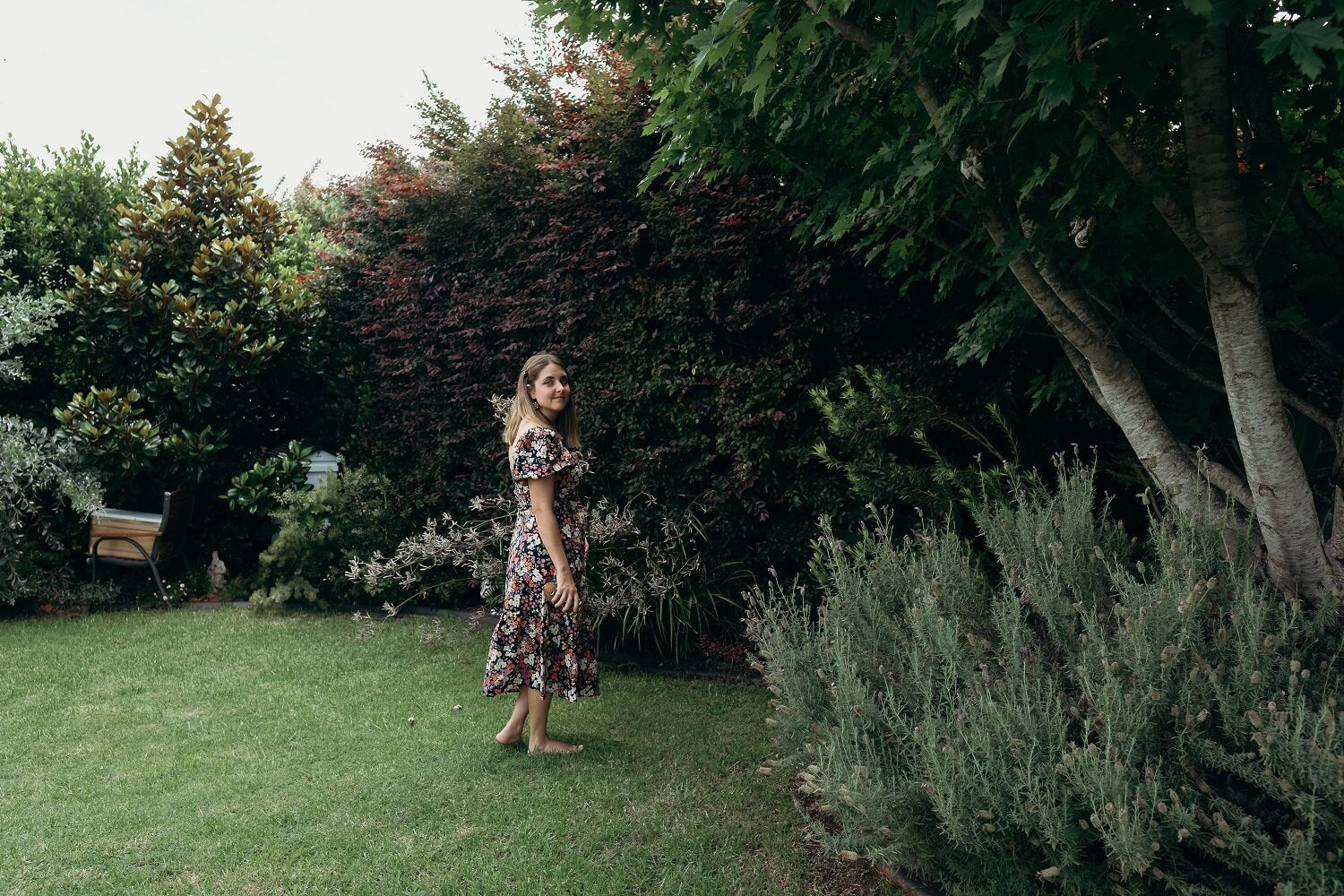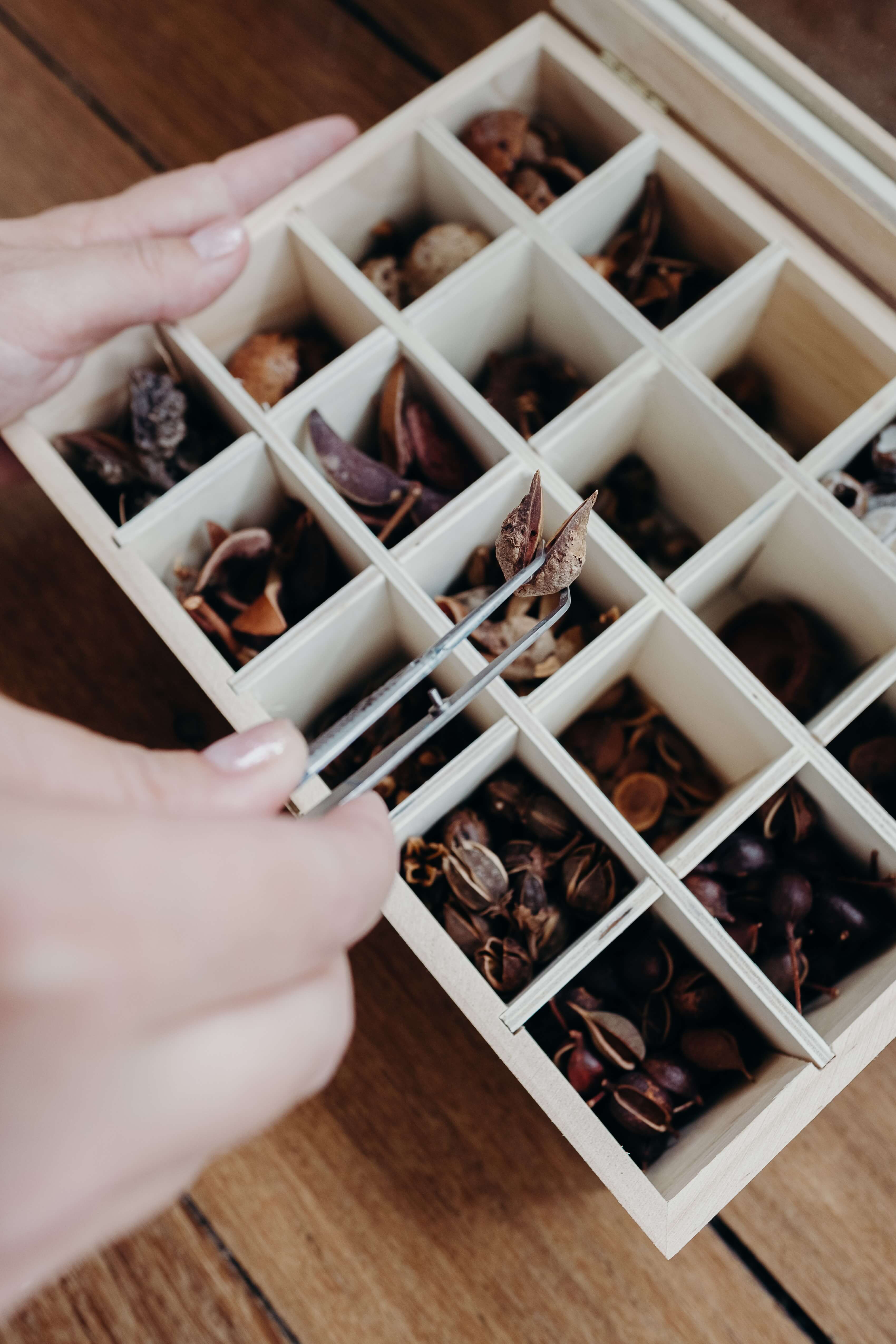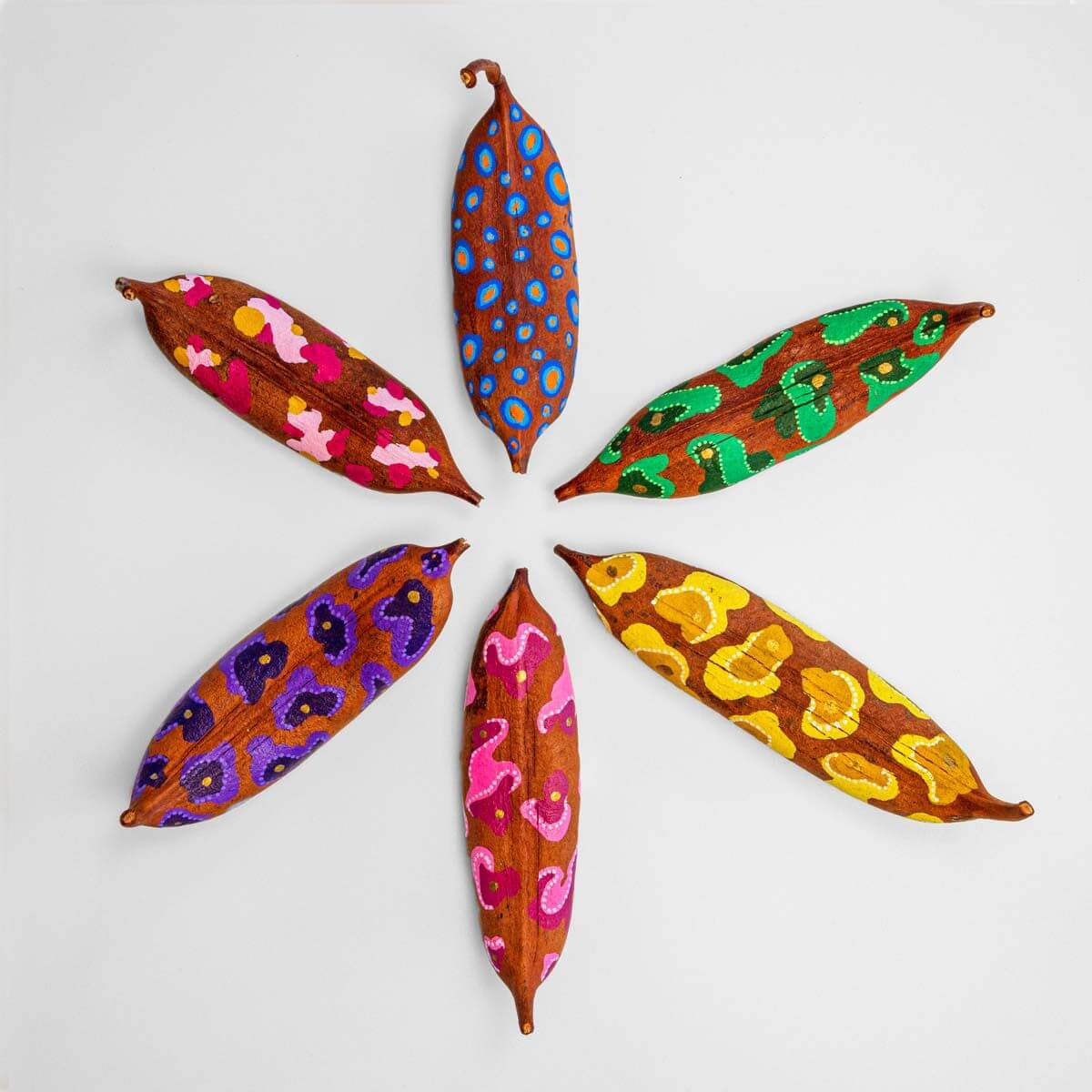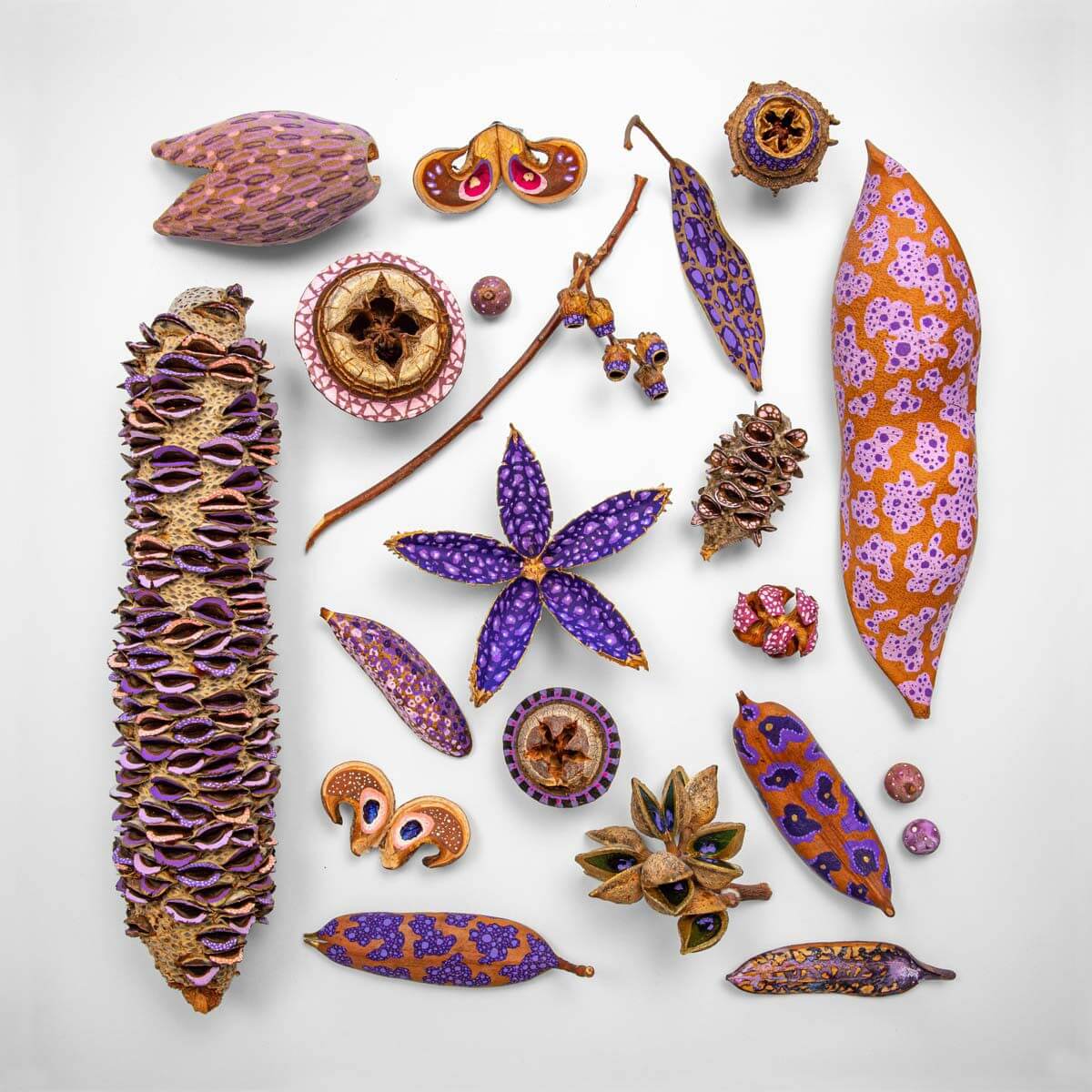Aussie Artist Chelsart (@chelsart) creates stunning and intricate botanical art. Using nature as her canvas, her delicate designs are made sustainably on seedpods, leaves and more treasures found in nature, ensuring nothing goes to waste. So, whether you’re thinking about creating art with nature too, or you’re just looking to try something new, here are Chelsart’s tops tips for painting with nature.

1. Get inspired with a nature walk and try Shinrin-yoku
Take the time to experience nature. For me it's usually on walks with my children. In Japanese culture, it's called Shinrin-yoku (or 'forest-bathing'), which means taking a purposeful trip into a forest (nature), for the sole purpose of reconnecting and relaxing. The focus is to take a slow, meaningful, and often meditative walk through a forest.

2. Have a collection to work from
My collection slowly grows, and I’m forever hunting for natural treasures. This isn't limited to seed pods; this could be collecting a stick that reminds you of something, like a twisted snake, or collecting leaves with a particular colour or shape that sparks your creativity.

3. Notice the textures and see what springs to mind
I have very bright and quirky designs that are organic and complementary to the seedpod. The seedpods I collect are naturally imperfect and vary drastically in size, colour, shape and texture. I often find myself handling my seedpods, and sometimes, the direction of a design will almost paint itself, because of the seed pod’s textures. I have specific patterns that pop into my mind that I need to paint and search through my seedpods to find one that compliments my thinking. But mostly, I'm inspired by naturally occurring patterns (i.e the arrangement of raindrops as they flow down my car's windscreen).
Finding your inspiration from naturally occurring patterns can be an excellent motivation for your art. Having a couple of printouts of designs, you like while painting, can help loosen up your creative juices too.

4. Silky and glossy surfaces need priming
Depending on the vessel you’re painting determines what preparation is needed. For seed pods and leaves - for instance, if they’re silky or glossy and you wish to paint on these with ink-based/oil paints, you should prepare them with gesso.

5. Try alcohol ink pens on driftwood and acrylics for leaves
At the risk of repeating myself, you can select a different paint type depending on your nature treasure. For instance, you could use alcohol ink pens to draw on driftwood or a combination of acrylic paint with paint pens for the details on leaves and/or seed pods.
You will need to remember that some vessels you choose to paint with may have some delightful, unexpected behaviours when applying your paint to them. Some seedpods are highly porous; therefore, the ink or paint you use will be absorbed in a disproportionate way that you may be used to when painting on paper, which is half the fun when co-creating with nature!

6. Work slowly for intricate designs
Using a tiny, detailed brush or pen tip and going as slowly as possible with both arms supported on a flat surface will give you the best outcome.
7. Let your designs dry
If I'm not using varnish, my creations dry within an hour or so. If I'm coating them with varnish, these dry overnight.
8. Add a varnish to finish
If I’m photographing them, I don't. But, if I'm finished with the seed pod and ready for a collector to purchase, I'll finish them with a varnish.

Images supplied by: Morgan Smith
We hope you feel inspired to try painting with nature too. Discover more about Chelsart here or read more of our tips from fellow featured artists here.
Show us what you create and #montmarteart or tag us @montmarteart on Instagram or Facebook, we’d love to see it!





























